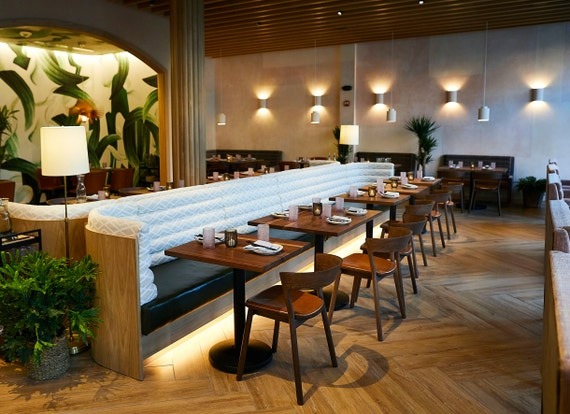
Cafe tables are the backbone of any coffee shop, bistro, or casual dining space, offering a perfect blend of functionality and style. They set the tone for a cafe’s ambiance, impact customer comfort, and create a lasting impression. From selecting the ideal material to choosing the right size and design, cafe tables play a significant role in shaping customer experiences. In this article, we’ll explore what makes a good cafe table, various types available, and tips on choosing and maintaining them.
Key Considerations for Choosing Cafe Tables
When selecting cafe tables, it’s essential to consider factors like durability, style, size, and functionality. The right choice will ensure that the tables withstand heavy use while enhancing the aesthetics of the space.
1. Durability and Material Quality
Cafe tables undergo frequent use, making durability a priority. The choice of material should align with the cafe’s needs, aesthetic, and budget. Common materials include:
- Wood: Offers a warm, classic look suitable for cozy cafes and rustic settings. Options range from hardwoods like oak and walnut to budget-friendly options like pine.
- Metal: Ideal for industrial or modern-themed cafes. Metal tables are durable and easy to maintain, with options like steel and aluminum that can be paired with wood or glass tops.
- Laminate and Veneer: Budget-friendly and available in a variety of styles and finishes. These materials are easy to clean and can mimic the look of wood or stone.
- Glass: Provides a sleek and modern look, best suited for upscale or contemporary cafes. However, glass tables require regular cleaning and may not be as durable as other options.
2. Size and Shape
The size and shape of a cafe table influence the layout, comfort, and flow of the dining area. Common shapes include:
- Round Tables: Ideal for small spaces, round tables promote conversation and are perfect for intimate, cozy settings.
- Square Tables: Versatile and easy to arrange in small or large spaces. Square tables are also easy to combine for larger groups.
- Rectangular Tables: Suitable for larger dining areas or communal seating. They work well in cafes with a mix of solo diners and groups.
3. Style and Aesthetic
Cafe tables should align with the theme and vibe of the space. For example:
- Industrial Style: Tables with metal frames and distressed wood tops for a rugged, urban look.
- Vintage or Retro: Classic wood or patterned laminate tops, adding charm and nostalgia.
- Minimalist Modern: Sleek designs with clean lines, often in neutral tones like white, black, or gray.
- Rustic and Farmhouse: Solid wood tables with natural finishes and sturdy legs, perfect for a cozy, homey vibe.
Types of Cafe Tables
Different types of cafe tables offer unique benefits and fit different settings. Here are some popular options:
1. Pedestal Cafe Tables
These tables have a single central leg, offering ample legroom and a stylish, minimalist design. Pedestal tables are popular in small cafes, as they create a spacious feel while maximizing seating flexibility.
2. Folding Cafe Tables
Folding tables are ideal for outdoor cafes and spaces with limited storage. They can be easily folded and stored when not in use, making them versatile and functional, especially during busy hours or events.
3. Communal Cafe Tables
Designed for social interactions, communal tables are larger, often rectangular tables that accommodate multiple customers. These tables are perfect for cafes aiming to create a social and friendly environment, ideal for group dining or collaborative work.
4. High-Top Cafe Tables
High-top tables create a more casual atmosphere and are often used in cafes with a bar-style setup. They are commonly paired with bar stools and work well in spaces with limited floor space.
5. Outdoor Cafe Tables
For cafes with outdoor seating, weather-resistant tables are essential. Outdoor cafe tables are usually made from materials like treated wood, metal, or plastic composites that withstand rain, sun, and wind.
Choosing the Right Cafe Table for Your Space
Selecting the ideal cafe table requires balancing functionality, aesthetics, and budget. Here are some tips to help:
1. Prioritize Comfort and Functionality
Consider the customer experience. Tables should be at a comfortable height, with enough surface area to accommodate drinks, plates, and utensils. High-traffic cafes might benefit from tables that are easy to clean and move around.
2. Match the Theme
The table design should complement the overall decor and brand of the cafe. For a chic, modern space, metal and glass tables may be ideal, while a vintage-inspired cafe might benefit from wooden tables with a distressed finish.
3. Consider Space Efficiency
In small cafes, space-saving options like round tables or folding tables can optimize seating arrangements. For larger spaces, mixing table sizes and types, such as combining small tables with communal ones, can create a dynamic layout.
4. Opt for Easy Maintenance
Cafe tables are prone to spills, scratches, and heavy use. Choose materials and finishes that are easy to clean and maintain. For instance, laminate tops are resistant to stains and scratches, making them an excellent option for high-traffic areas.
Styling Tips for Cafe Tables
Cafe tables can be styled to enhance the atmosphere of the space. Here are a few simple ideas:
1. Add Small Decorative Accents
Table decor such as small potted plants, candles, or salt-and-pepper shakers can add personality and charm to the tables without overwhelming the space. Choose elements that align with the cafe’s brand and style.
2. Use Table Linens or Runners
Linens or table runners can add a pop of color and style to the tables. This is especially useful for cafes that want to change decor seasonally or add a touch of elegance for special events.
3. Consider Practical Table Accessories
For a neat and organized look, use accessories like menu holders or napkin dispensers. Ensure that accessories are low-profile and do not take up too much space on the table.
Care and Maintenance for Cafe Tables
Cafe tables require regular maintenance to keep them looking fresh and clean. Here are some maintenance tips:
1. Clean Regularly
Wipe down tables frequently with a mild cleaner to prevent buildup and remove food stains. Avoid using abrasive cleaners on materials like wood or glass, as they may cause damage.
2. Protect Against Moisture
For wooden tables, use coasters and placemats to prevent moisture damage. Outdoor tables should be covered or brought inside during extreme weather to prolong their lifespan.
3. Periodically Check for Wear and Tear
Inspect tables regularly for loose screws, wobbling, or surface scratches. Tighten any screws and address minor damage promptly to keep the tables in good condition.
Conclusion
Cafe tables are essential elements that contribute to the overall look, feel, and functionality of a cafe space. By selecting the right materials, sizes, and styles, and by taking steps to style and maintain them properly, cafe owners can create a welcoming and efficient environment that enhances the customer experience. From rustic wood to sleek metal designs, there is a cafe table to suit every aesthetic and space.












